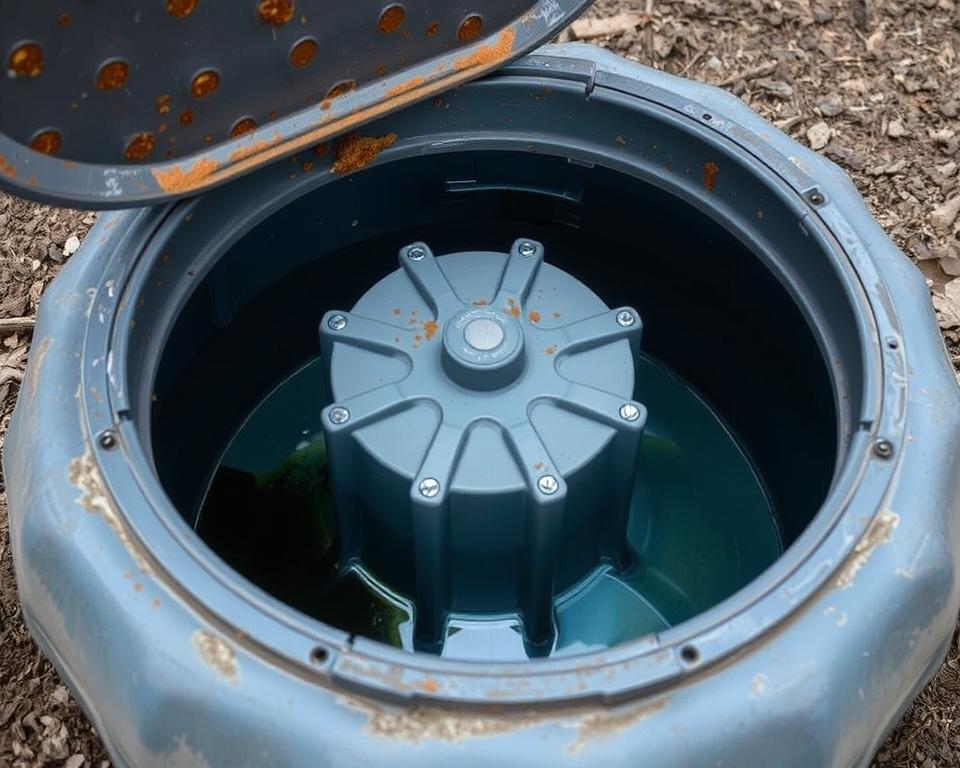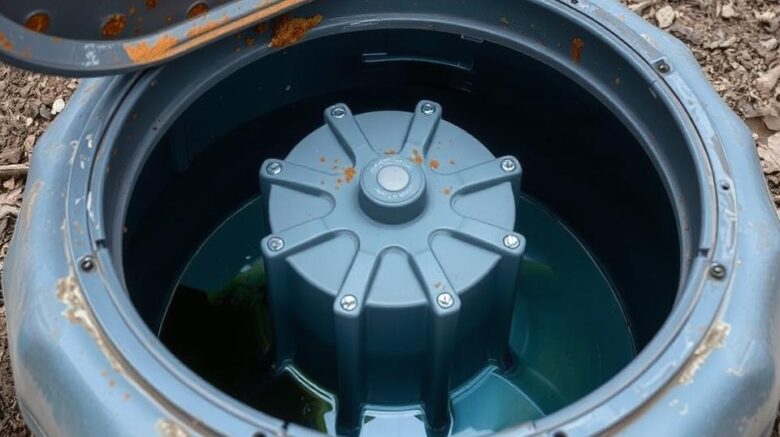What You’ll Pay for Septic Tank Pumping
Have you wondered about the real expense of maintaining your septic system in good order, or whether you’re spending excessively? It’s vital for homeowners to comprehend the specifics of septic tank pumping prices. Typically, the price tag is roughly $420, however it can range widely. This spread stems from factors like your tank’s capacity and where you live – septic pumping near me.
Regular servicing of your septic tank prevents expensive fixes, highlighting the necessity of understanding service costs. This article will dive into septic tank service pricing in depth. This will allow you to budget cost‑effectively for your system’s upkeep.
Important Discoveries
- Average septic tank pumping costs about $420.
- Prices can sit between $290 and $560 subject to various factors.
- Regular servicing prevents larger repairs in the future.
- Most households need pumping every 3 to 5 years.
- Family size and water usage can affect pumping frequency.
Recognizing the Significance of Septic Tank Pumping
Septic tank pumping is critical for a efficient wastewater system. It extracts solids that, if left unchecked, cause blockages. Consistent pumping doesn’t just stops bad smells but also fends off hefty repair costs.
Neglecting septic tank maintenance can threaten our wide use on these systems. Fortunately, reasonably priced services lower the risk of system failure. Routine upkeep lengthens your septic system’s life, ensuring trouble‑free operation.
Fee information for septic tank upkeep illustrates the value of preventive care. Regular service detects problems before they escalate, dodging major damage and high repair bills. Regular pumping is a wise move for homeowners to protect their property and ensure peace of mind.
Standard Fees for Septic Tank Pumping
Septic tank pumping generally ranges between $250 and $600 USD in cost. In most cases, homeowners will spend about $400 USD for this essential service. Price variations are due to elements like tank size, where you live, and how often service is performed. Typical tanks, around a thousand gallons, usually cost between $225 USD and $400 USD.
Homeowners should remember the necessity of setting aside funds every 3 to 5 years for septic tank cleaning. This routine care depends on the system load and size. It avoids more serious, costlier issues down the road, proving to be both time and budget friendly.

Variables Affecting Septic Tank Pumping Prices
Multiple considerations are crucial in setting the price of septic tank pumping. Grasping these details empowers homeowners to allocate funds for these required services properly.
The volume is significant a lot. Larger tanks demand more effort and time to empty, which results in increased fees. The reachability to your tank also significantly impacts the price. Tanks buried deep or in challenging locations necessitate more hours and extra gear from technicians, thus raising the labor costs.
Costs can vary widely depending on where you live. This is due to differences in local labor rates and dumping charges. For example, some areas have higher charges for getting rid of waste, affecting the final service cost. Moreover, tanks with heavy solid waste accumulation also incur additional fees—anywhere from $100 to $300 USD. Plus, the more frequently a tank requires pumping—due to higher water usage—the higher the ongoing expenses.
Septic Tank Capacity and Its Influence on Cost
The capacity of your septic tank strongly influences the cost of its upkeep. Compact tanks, such as, those that can hold three‑quarters of a thousand gallons, generally have lower pumping costs, generally ranging from $175 to $300. On the other hand, higher‑capacity tanks, capable of holding up to one thousand seven hundred fifty gallons, may incur charges between $400 and $700. The majority of single‑family residences use tanks that hold between one thousand to twelve‑fifty gallons, offering a blend between capacity and function.
Households with compact systems or many residents often need more frequent pumping services, which increases the overall expense. It’s important to schedule regular septic tank inspections in these situations. This ensures the tank does not overflow or fail, which prevents additional costs. By recognizing the relationship between tank size and service fees, homeowners can make knowledgeable choices regarding their septic systems and their upkeep requirements.
Regional Differences in Septic Tank Pumping Costs
Septic tank pumping costs can differ greatly based on location. In urban areas, the expenses are frequently higher due to local septic services facing increased overhead. For example, Minneapolis, MN residents may spend between $180 and $280, while those in Portland, OR could see prices from $440 to $750.
The reasons behind these differences are varied. They include local living costs, need for septic specialists, and area‑specific regulations. In places where septic services are limited, homeowners might pay more due to the fewer choices. Moreover, strict regulations in some regions can increase the need for higher compliance fees, influencing the cost of services.
Understanding about these geographic cost variances is important for homeowners. It enables them to budget their septic maintenance spending more accurately. By understanding local pricing, they can seek quotes from specialists prudently, servicing their septic system effectively without breaking the bank.
Supplementary Fees to Consider with Septic Tank Pumping
Homeowners often forget about various additional maintenance costs connected with septic tank pumping. The primary cost pays for just the basic service, excluding other potential expenses. Knowing these can assist with preparing a full budget.
Video line checks, for instance, range between $250 to $500. They offer a minimally disruptive look into the system’s condition. Additionally, cleaning filters, which if ignored can cause system failures, represents another cost.
The spread for repairs can be wide, from $100 to $4,000, based on the specific issues. This spread emphasizes the importance of factoring in additional maintenance costs for future budgeting.
Allocating Funds for Septic Tank Maintenance
When budgeting for septic tank care, it’s critical to adopt a comprehensive view. This covers a few critical elements. Due to variable factors, the cost of maintenance can change considerably. Because of this, proper financial planning is essential.
To keep your system functions smoothly and to avoid unexpected bills, keep these periods and services in mind:
- Regular pumping: This service is usually required every 3–5 years.
- Inspections: Budget for around $250 to $1,180 for inspections every three years.
- Potential repairs: Set aside a fund for emergency repairs, which can arise unexpectedly.
Establishing a routine maintenance calendar with a trusted septic service is key. By expecting these expenses, homeowners can evade the hefty costs tied to neglect. This method secures the durability and performance of their septic systems.
Typical Indicators That Your Septic Tank Needs Pumping
Staying alert to your septic system’s condition is crucial. Identify the first indicators that suggest your septic tank requires pumping. Doing so can prevent major damage and cut repair costs.
- Slow drains: Water with sluggish flow in sinks, tubs, or toilets could signal your septic tank is overflowing.
- Unpleasant odors: Bad smells coming from the septic tank or in your yard are frequently urgent signs of a problem.
- Gurgling sounds: Odd gurgling from your plumbing might show air is trapped because of a blockage.
- Wet spots: Standing water or greener grass sections near the drain field point to waste seepage from the tank.
- Dark green grass: Grass that is more vibrant and appears robust around the drain field may indicate leakage of nutrients, hinting at an issue.
Regular checks by septic system specialists can ensure your tank is in good shape. Using experienced septic technicians for maintenance stops these issues, ensuring your system’s longevity.
Benefits of Routine Septic Tank Inspections
Frequent inspections are central to keeping your septic system in top condition. They pinpoint potential problems before they turn into expensive repairs. By engaging professionals for these checks, every part of your system undergoes a thorough assessment.
The process looks at multiple parts of your system, including waste levels and the drain field’s state. It ensures that critical parts, like baffles, work as they should. Finding issues sooner helps prevent hazardous overflows and shields the environment, benefiting both your home and the wider community.
Having your septic tank checked every three years can save you a lot of money. It stops bigger issues from developing due to neglect. This not only saves on repair costs but also gives your peace of mind.
| Inspection Aspect | Importance |
|---|---|
| Waste Level Assessment | Prevents overflow and backups |
| Drain Field Evaluation | Identifies saturation and function |
| Component Functionality Check | Ensures proper system operation |
| Early Problem Detection | Saves on repair costs |
Strategies to Save on Septic Tank Pumping Prices
Homeowners aiming to reduce septic tank pumping costs have multiple strategic options. Setting up group services with neighbors is one efficient method. This involves coordinating with others nearby to schedule services as a group, potentially securing group discounts. It’s a way to strengthen community bonds while trimming expenses more effectively.
Another useful approach is to sign up for maintenance plans with septic service providers. These plans often include discounted prices for routine check‑ups and pumpings, keeping septic systems working properly at a lower cost. Homeowners are urged to ask about these plans when contacting service companies.
Keeping the septic tank easy to reach can also lower pumping expenses. Clear accessibility means there’s no need for extra labor charges. It’s wise to keep the area around the tank free from obstructions, allowing for straightforward servicing.
Embracing certain habits helps in prolonging the time between pumpings as well. Reducing water usage and limiting garbage disposal use are critical practices. These actions can significantly boost septic system health, reducing the need for regular maintenance. By embracing these habits, homeowners can successfully reduce their septic tank pumping costs, preserving their budgets and systems.
Final Thoughts
Guaranteeing routine septic tank pumping is key for homeowners who want to keep their waste management system healthy and effective. Understanding about the costs involved permits smart budgeting. This way, you can secure cost‑effective septic services without compromising your system’s functionality.
Adopting a preventive approach to maintenance is highly rewarding. By watching for clues that show the need for pumping, you can avoid costly repairs and extend your system’s lifespan. Such actions not only boost your home’s functionality but also deliver you peace of mind.
Ultimately, staying on top of routine inspections and timely septic tank pumping is critical for efficient home maintenance. By focusing on proper planning and seeking out affordable septic service, you’ll guarantee your septic system remains operational and efficient for many years.
